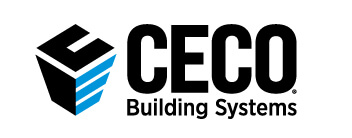Benefits of Using Insulated Composite Backup Panels
Posted on April 27, 2020 by Rachel Mercado
Designing and constructing an exterior wall assembly means that four performance barriers need to be addressed and included. Specifically, there needs to be a Weather Resistive Barrier (WRB), an air barrier, insulation as a thermal barrier, and a structural support method to hold these barriers in place. In conventional construction incorporating each of these four components often means that four different trades install four different products. This takes coordination effort, a variable amount of time, and a variable amount of cost.
For those who have ever wondered if there is a better way to build a wall the answer is yes! A single solution is now available that integrates all of these components into a 4 in 1 product addressing air, water, vapor, and thermal barriers. Known as insulated composite backup panels (ICBP) they are manufactured to create a better wall solution that designers and contractors can readily incorporate into their building projects. Some of their benefits include the following:
ICBP “All-in-One” Make-up: The ICBP panels are essentially “sandwich” panels fabricated with continuous inner and outer metal faces and a central foam core. The outer metal is referred to as the face skin, while the inner metal is called the liner skin. They each come in various thicknesses ranging from a standard 29 gauge, down to a heavier 20 gauge. The face and liner skins provide protection from environmental elements with a non-curing butyl as the liner side seal, which creates the weather-tight barrier. The foam core between the two skins is commonly a highly efficient polyisocyanurate or polyurethane foam.. The closed cell foam provides the thermal barrier required, and can also help with water resistance. The foam and metal then work together to provide structural integrity for the panel. Typically the panels allows for a choice of exterior rainscreen finishes. With everything related to the performance of the wall provided in one product, it truly is an “all-in-one” construction solution.
Choices in the Types of ICBPs: There are two fundamental types of ICBPs. The standard version is lighter gauge, installs horizontally, and is intended to be attached to the structural support system for the building, such as a metal stud wall or metal girts not more than 24” o.c.. The long-span version installs vertically, needs to be attached on supports greater than 24” o.c. and is suitable for interior metal surfaces. These different panel type options allow for applicable accommodations in the way that the panels are incorporated into a building design.
Design Flexibility: The use of ICBPs allows any type of exterior finished appearance to be used on the walls. For the exterior various materials can be used. With traditional ICBPs, an integral rail system is available that fits into the joints of the face skins for installation of rain screen systems. Those rails can then support any common type of finish material such as metal panels, masonry, terra cotta, stucco on a substrate, etc. On the inside, the liner panels may be left exposed (as is the case in some utilitarian metal buildings) or covered with gypsum board, wood, paneling, tile, or any other interior treatment. Note that this full design flexibility makes ICBPs different from insulated metal panels (IMPs) which allow only finished metal on the exterior and interior of the building. Regardless of the final design though, exterior walls that use foam insulation need to meet specific code requirements including air, water, structural, thermal and fire testing. Manufacturers of ICBPs typically have conducted this testing on a wide range of design and assembly types, with documentation available to prove their code compliance.
Customized Thermal Performance: Different climate zones require different levels of insulation. ICBPs meet this challenge because it’s possible to specify the thicknesses of insulation required for different project locations—thicker insulation means higher total R–values. Furthermore, manufacturers of ICBPs provide complete materials, and instructions on how to properly seal the edges of the panels, in order to create barriers that are continuous and highly energy conserving. When properly tied into other building systems and components (i.e. windows, doors, roof assemblies, floor assemblies, etc.) the result should be excellent energy performance customized to suit the building. Of course, designers and contractors need to pay close attention to those details for the best outcomes.
Time and Cost Savings: Using one trade instead of multiple subcontractors to install air, water, and thermal barriers clearly makes construction easier. That means that a building can be enclosed quicker so that interior work can start sooner, leading to a possible reduction in the overall total construction time. Less labor and less time also means more cost savings, offering an economical, efficient, and appealing alternative to traditional construction.
Broad Usage: With all of these well-established benefits, it is easy to see that the possibilities are virtually endless for their use in any type of project. In fact, they have been used quite successfully on many different commercial building types including schools, hospitals, retail, offices, metal buildings, hospitality buildings, higher education buildings, and others. The use of ICBPs should definitely be considered by anyone looking to improve performance, retain design flexibility, and control time and cost.
To find out more about how these innovative panels can help with your current or next project contact your local Ceco representative.


